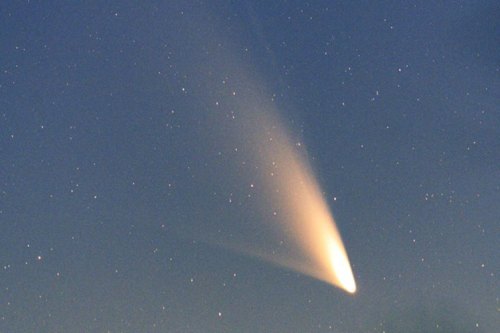The Hubble Space Telescope Just Sent Back A New Photo Of The Twin Jet Nebula. Here’s What It Looked
The Hubble Space telescope just sent back a new photo of the Twin Jet Nebula. Here’s what it looked like in 1997:

And now …

Whoa. But wait, we also got an updated image of the merging galaxies NGC 6240. What it looked like in 2008:

And today:

Science, you’re the best. Oh, and the explanation behind those merging galaxies and their black holes is wild.
More Posts from Intergalacticnerd and Others
Solar System: Things to Know This Week
Here are a few things you should know about our solar system this week:
1. The Bright and the Beautiful

In its lowest-altitude mapping orbit, at a distance of 240 miles (385 kilometers) from Ceres, Dawn has provided scientists with spectacular views of the dwarf planet, especially of its bright, young, hexagonal craters like Haulani.
2. Mars Needs Brains

NASA is soliciting ideas from U.S. industry for designs of a Mars orbiter for potential launch in the 2020s. The satellite would provide advanced communications and imaging, as well as robotic science exploration, in support of NASA’s Journey to Mars. This effort seeks to take advantage of industry capabilities to improve deep space, solar electric propulsion-enabled orbiters.
3. Seeing Double

NASA measured a solar flare from two different spots in space, using three solar observatories. During a December 2013 solar flare, three sun-observing spacecraft captured the most comprehensive observations ever of an electromagnetic phenomenon called a current sheet.
4. Set a Course for Europa

This artist’s rendering shows NASA’s Europa mission spacecraft, which is being developed for a launch in the 2020s. The mission would place a spacecraft in orbit around Jupiter in order to perform a detailed investigation of the giant planet’s moon Europa—a world that shows strong evidence for an ocean of liquid water beneath its icy crust and which could host conditions favorable for life.
5. Go Deep

Jupiter is huge, powerful and spectacular. But what lies hidden inside the giant planet? The Juno mission arrives at Jupiter in July to help us find out. Join Dr. Fran Bagenal to learn more about the mission and how it plans to delve deep into Jupiter’s secrets this year.
Want to learn more? Read our full list of things to know this week about the solar system HERE.
Make sure to follow us on Tumblr for your regular dose of space: http://nasa.tumblr.com

Valles Marineris: The Grand Canyon of Mars
Image Credit: Viking Project, USGS, NASA
The largest canyon in the Solar System cuts a wide swath across the face of Mars. Named Valles Marineris, the grand valley extends over 3,000 kilometers long, spans as much as 600 kilometers across, and delves as much as 8 kilometers deep. By comparison, the Earth’s Grand Canyon in Arizona, USA is 800 kilometers long, 30 kilometers across, and 1.8 kilometers deep. The origin of the Valles Marineris remains unknown, although a leading hypothesis holds that it started as a crack billions of years ago as the planet cooled. Several geologic processes have been identified in the canyon. The above mosaic was created from over 100 images of Mars taken by Viking Orbiters in the 1970s.
What Are the Bright Spots on Ceres?

Dwarf planet Ceres has more than 130 bright areas, and most of them are associated with impact craters. Now, Ceres has revealed some of its well-kept secrets in two new studies in the journal Nature, thanks to data from our Dawn spacecraft.
Two studies have been looking into the mystery behind these bright areas. One study identifies this bright material as a kind of salt, while the other study suggests the detection of ammonia-rich clays.
Study authors write that the bright material is consistent with a type of magnesium sulfate called hexahydrite. A different type of magnesium sulfate is familiar on Earth as Epsom salt.

Researchers, using images from Dawn’s framing camera, suggest that these salt-rich areas were left behind when water-ice sublimated in the past. Impacts from asteroids would have unearthed the mixture of ice and salt.
An image of Occator Crater (below) shows the brightest material on Ceres. Occator itself is 60 miles in diameter, and its central pit, covered by this bright material, measures about 6 miles wide. With its sharp rim and walls, it appears to be among the youngest features on the dwarf planet.

In the second nature study, members of the Dawn science team examined the composition of Ceres and found evidence for ammonia-rich clays. Why is this important?
Well, ammonia ice by itself would evaporate on Ceres today, because it is too warm. However, ammonia molecules could be stable if present in combination with other minerals. This raises the possibility that Ceres did not originate in the main asteroid belt between Mars and Jupiter, where it currently resides. But instead, might have formed in the outer solar system! Another idea is that Ceres formed close to its present position, incorporating materials that drifted in from the outer solar system, near the orbit of Neptune, where nitrogen ices are thermally stable.

As of this week, our Dawn spacecraft has reached its final orbital altitude at Ceres (about 240 miles from the surface). In mid-December, it will begin taking observations from this orbit, so be sure to check back for details!
ake sure to follow us on Tumblr for your regular dose of space: http://nasa.tumblr.com

The Belt of Venus is a pink glowing arch seen across the sky when the shadow of the Earth’s translucent atmosphere casts a shadow back upon itself.

NASA just released the most detailed photo of space ever taken
The picture of the Andromeda galaxy, the nearest spiral galaxy to our own, is comprised of a mind-boggling 1.5 billion pixels and was snapped from 2.5 million light years away by the powerful Hubble Space Telescope.
See it in all its glory




Einstein’s gravitational waves found at last
One hundred years after Albert Einstein predicted the existence of gravitational waves, scientists have finally spotted these elusive ripples in space-time.
In a highly anticipated announcement, physicists with the Advanced Laser Interferometer Gravitational-Wave Observatory (LIGO) revealed on 11 February that their twin detectors have heard the gravitational ‘ringing’ produced by the collision of two black holes about 400 megaparsecs (1.3 billion light-years) from Earth.
“Ladies and gentlemen, we have detected gravitational waves,” David Reitze, the executive director of the LIGO Laboratory, said at a Washington DC press conference. “We did it!”
Continue reading via source: Nature
Infographic: Nik Spencer/Nature

The Milky Way Meteor Shower by jeremyjonkman on Flickr.


This is Kjell Lindgren. He’s a NASA astronaut who just got back from 5 months on the International Space Station. There are two reasons why this picture is hilarious:
His wife is flawless and makes bad space puns to make him do household chores.
I have that shirt. Thousands of people have that shirt. That shirt is available at Target. Which means actual astronaut Kjell Lindgren, with his wardrobe already full of NASA-issued and logo-emblazoned clothes, was at Target, saw a NASA shirt, and was like, “Yes, I am buying this because this is what I want to spend my actual astronaut salary on.”
tl;dr NASA employs a bunch of fucking nerds

Dying star IC 4406
js

Comet Panstarrs – Seen from Queenstown, New Zealand (March 2, 2013)
Credit – Minoru Yoneto
-
 furiouschaoscat liked this · 1 year ago
furiouschaoscat liked this · 1 year ago -
 lemwimsen reblogged this · 1 year ago
lemwimsen reblogged this · 1 year ago -
 lemwimsen liked this · 1 year ago
lemwimsen liked this · 1 year ago -
 indiefoxproductions reblogged this · 1 year ago
indiefoxproductions reblogged this · 1 year ago -
 skyramamve liked this · 1 year ago
skyramamve liked this · 1 year ago -
 morghiesart liked this · 1 year ago
morghiesart liked this · 1 year ago -
 holtizicont liked this · 1 year ago
holtizicont liked this · 1 year ago -
 cappybaras liked this · 1 year ago
cappybaras liked this · 1 year ago -
 stringsbean reblogged this · 1 year ago
stringsbean reblogged this · 1 year ago -
 colorpatch reblogged this · 2 years ago
colorpatch reblogged this · 2 years ago -
 barbaraannprior reblogged this · 2 years ago
barbaraannprior reblogged this · 2 years ago -
 kebabista liked this · 2 years ago
kebabista liked this · 2 years ago -
 pfannkuchendammerung reblogged this · 2 years ago
pfannkuchendammerung reblogged this · 2 years ago -
 bat-zilla reblogged this · 2 years ago
bat-zilla reblogged this · 2 years ago -
 starfilm reblogged this · 2 years ago
starfilm reblogged this · 2 years ago -
 starfilm liked this · 2 years ago
starfilm liked this · 2 years ago -
 crynwr-drwg reblogged this · 2 years ago
crynwr-drwg reblogged this · 2 years ago -
 datsparklez reblogged this · 2 years ago
datsparklez reblogged this · 2 years ago -
 maqqy96 reblogged this · 2 years ago
maqqy96 reblogged this · 2 years ago -
 drzephyr liked this · 2 years ago
drzephyr liked this · 2 years ago -
 asiandutchgirl reblogged this · 2 years ago
asiandutchgirl reblogged this · 2 years ago -
 coolricoolatta reblogged this · 2 years ago
coolricoolatta reblogged this · 2 years ago -
 25coriandah liked this · 2 years ago
25coriandah liked this · 2 years ago -
 toofewtrueblue reblogged this · 2 years ago
toofewtrueblue reblogged this · 2 years ago -
 toofewtrueblue liked this · 2 years ago
toofewtrueblue liked this · 2 years ago -
 nerine-in-bloom liked this · 2 years ago
nerine-in-bloom liked this · 2 years ago -
 ohsugar-ohhoney liked this · 2 years ago
ohsugar-ohhoney liked this · 2 years ago -
 girltwinkcn reblogged this · 2 years ago
girltwinkcn reblogged this · 2 years ago -
 girltwinkcn liked this · 2 years ago
girltwinkcn liked this · 2 years ago -
 paopujuice reblogged this · 2 years ago
paopujuice reblogged this · 2 years ago -
 paopujuice liked this · 2 years ago
paopujuice liked this · 2 years ago -
 smalllemonade liked this · 2 years ago
smalllemonade liked this · 2 years ago -
 lady3li liked this · 2 years ago
lady3li liked this · 2 years ago -
 nekogorogoro reblogged this · 2 years ago
nekogorogoro reblogged this · 2 years ago -
 carryonwaywardangel reblogged this · 2 years ago
carryonwaywardangel reblogged this · 2 years ago -
 crynwr-drwg liked this · 2 years ago
crynwr-drwg liked this · 2 years ago -
 cardinalfeng reblogged this · 2 years ago
cardinalfeng reblogged this · 2 years ago -
 clonebutchblues reblogged this · 2 years ago
clonebutchblues reblogged this · 2 years ago -
 kgoblin reblogged this · 2 years ago
kgoblin reblogged this · 2 years ago -
 kgoblin liked this · 2 years ago
kgoblin liked this · 2 years ago -
 soilrockslove liked this · 2 years ago
soilrockslove liked this · 2 years ago -
 infinitelines liked this · 2 years ago
infinitelines liked this · 2 years ago
"Astronomy compels the soul to look upwards and leads us from this world to another." - Plato
147 posts